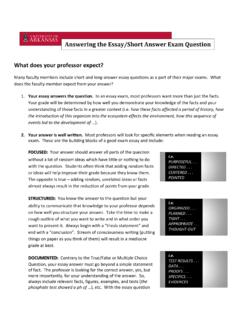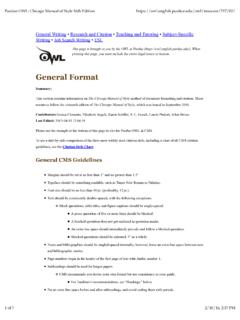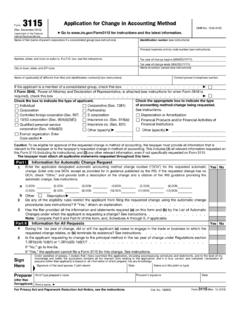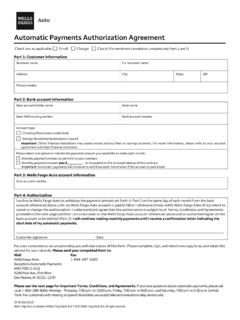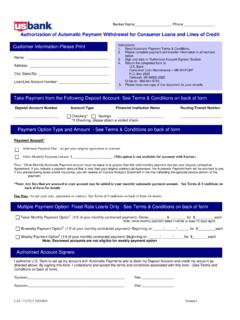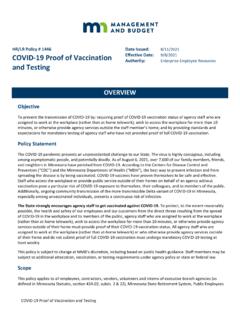Transcription of Drafting or Reviewing a Commercial Contract
1 Cotropia, Christopher 8/4/2016 For Educational Use Only Drafting or Reviewing a Commercial Contract , Practical Law Practice Note 2016 Thomson Reuters. No claim to original Government Works. 1 Drafting or Reviewing a Commercial Contract by Practical Law Commercial Transactions Maintained USA A Practice Note discussing general Drafting and negotiating concerns for use when Drafting or Reviewing a Commercial agreement. This Note provides information on the standard elements of a Commercial Contract , including the preamble, recitals, definitions, term and termination, representations and warranties, indemnification, limitations on liability and miscellaneous and boilerplate provisions. Contents Factors Influencing the Drafting and Negotiation Process Building Blocks of a Commercial Contract Preamble Title Parties Effective Date Recitals Definitions Term and Termination Term Termination Operative Provisions Price and Payment Price Payment Representations and Warranties Product or Service Warranty Drafting and Negotiating Product or Service Warranties Express Contractual Remedies Indemnification Termination Rights Limitation of Liability Availability of Remedies Consistency of Remedial Provisions Cotropia, Christopher 8/4/2016 For Educational Use Only Drafting or Reviewing a Commercial Contract , Practical Law Practice Note 2016 Thomson Reuters.
2 No claim to original Government Works. 2 Intellectual Property Rights Ownership of IP Rights Use of IP Rights Confidentiality Audit and Inspection Rights Right to Audit Books and Records Right to Inspect Premises Drafting and Negotiating Audit or Inspection Provisions Insurance Determining the Scope of an Insurance Covenant Dispute Resolution Escalation Clauses Arbitration Miscellaneous and Boilerplate Signatures Attachments Schedules Exhibits Cotropia, Christopher 8/4/2016 For Educational Use Only Drafting or Reviewing a Commercial Contract , Practical Law Practice Note 2016 Thomson Reuters. No claim to original Government Works. 3 This Note is a guide to issues to consider when Drafting or Reviewing a Commercial agreement. It focuses on the provisions that are generally included in contracts for the supply of goods and services, but may be applicable to many types of Commercial agreements.
3 Not all Commercial contracts include each of the provisions discussed in this Note. Counsel should select the provisions that are appropriate for a specific transaction. Contract interpretation is governed by applicable state law. This Note contains information that is general and not jurisdiction-specific. All references to the UCC refer to the pre-2003 model Uniform Commercial Code. The UCC enacted in a particular state may be different than the model code. Factors Influencing the Drafting and Negotiation Process Many factors influence the process of Drafting and negotiating a Commercial agreement, including: The relationship between the parties. Each party s relative negotiating leverage. The size and scope of the transaction, including territory and whether the arrangement is exclusive or non-exclusive. The creditworthiness of the buyer or service recipient. The reputation of the seller or service provider.
4 Each party s risk tolerance. The degree of Contract standardization for the selected transaction. Any relevant antitrust considerations, such as vertical, horizontal and price discrimination issues. Which party, by role or other factors, is more likely to breach the agreement. The potential interplay between the agreement and other contractual arrangements, for example, compliance with loan covenants. Before Drafting or Reviewing any Contract , counsel should consider these factors and review all key agreed and desired deal terms with the appropriate business executives. It is important to consider the cascading effects that making a change to one provision may have on other provisions in the agreement, and to discuss any resulting effects of a proposed change with the appropriate business executives. For more information on negotiating Commercial agreements, see Practice Note, Contract Negotiations: Business Briefing.
5 Building Blocks of a Commercial Contract The structural components of a Commercial Contract are used to construct the provisions of an agreement. Contractual building blocks are used to: Express the fundamental terms of the Contract . Allow each party to realize the benefits that it bargained for. Allocate risk between the parties. The most common types of contractual building blocks are: Representations and warranties. A representation is an assertion of fact given by one party (the maker) to induce another party (the recipient) to enter into a Contract or take other action. A warranty is a promise that the assertion of fact is true, supported by an implied promise of indemnity if the assertion is false. Covenants. A covenant, also know as an agreement, is a promise made by one party (the obligor) to another party (the Cotropia, Christopher 8/4/2016 For Educational Use Only Drafting or Reviewing a Commercial Contract , Practical Law Practice Note 2016 Thomson Reuters.)
6 No claim to original Government Works. 4 obligee) to take or refrain from taking certain actions. Rights. A right is the inverse of a covenant. It is the benefit of the obligor s promise to act or refrain from acting that is owed to the obligee. Conditions. A condition is a fact that must be true or an event that must have occurred before a party s obligations or rights under the agreement are triggered. Mutual Statements of fact. A mutual statement of fact is a declaratory and informational statement (such as a definition or choice of law provision) that does not operate independently, but functions by clarifying, expanding or limiting the meaning of the representations and warranties, covenants, rights and conditions that relate to or incorporate the definition or other statement. For more information on representations and warranties, covenants, rights and conditions, see Practice Note, Representations, Warranties, Covenants, Rights and Conditions.
7 For more information on the relationship between each of the key contractual building blocks, see Practice Note, Relationship between Representations, Warranties, Covenants, Rights and Conditions. For information on how to allocate risk throughout a Contract , and how changes in one provision may affect another, see Practice Note, Risk Allocation in Commercial Contracts. Preamble Commercial contracts generally begin with a description of the agreement that sets out the title, parties and effective date. Title For ease of identification, the title of the agreement should appear at the top of the first page, generally in bold typeface, and should reflect the type of agreement the parties are entering into. Parties A short description of the parties to the Contract typically appears in the preamble. Ambiguity in the description of the parties may jeopardize the enforceability of the Contract . For example, an incorrectly named subsidiary may not have the power to convey the assets or pay the price required by the transaction.
8 Drafters can ensure the proper identification of parties by: Determining the appropriate entities, including: identifying the appropriate counterparty; and considering whether related parties, such as subsidiaries, parent entities or affiliates, should be included. Using the full legal name of each party. If there are multiple parties, stating whether party liability will be joint or joint and several. Including each party s business address and the state of incorporation of each legal entity. Effective Date The preamble should specify the date on which the parties intend the agreement to become effective. The parties should consider whether the agreement will become effective: On execution. As of a specified past or future date. On satisfaction of certain conditions. Cotropia, Christopher 8/4/2016 For Educational Use Only Drafting or Reviewing a Commercial Contract , Practical Law Practice Note 2016 Thomson Reuters.
9 No claim to original Government Works. 5 In some agreements there are two types of effective dates. The first is usually specified in the preamble and refers to a general Contract date. The second is specified in a separate provision that identifies the date on which one or more material aspects of the contractual relationship should occur (for example, the start of the term under an exclusive distribution agreement or the date a sale is expected to close). Recitals Recitals are an explanation of the purpose of the agreement that provide helpful background information. Drafters should avoid inconsistency and ambiguity between the recitals and the main body of the Contract . When Drafting a Commercial agreement: Determine whether or not to include recitals, and how detailed to make them. If including recitals, consider what they should accomplish. If the audience for the agreement consists of only the parties and their lawyers, the recitals may be brief or omitted.
10 However, if the anticipated audience is wider, consider Drafting more detailed recitals that explain the agreement s background and the parties intent. Ensure that the recitals are drafted to avoid ambiguity. For example, the parties should: not include language in the recitals that adds legally binding obligations or contradicts the wording contained in an operative provision of the Contract ; ensure that facts stated in the recitals that pertain to the parties past relationship are accurate; and consider stating facts in chronological order. Definitions Defined terms are a crucial part of any Commercial Contract . They enable the drafter to: Tailor the meanings of certain terms to the subject of the transaction or relationship. Expand or limit a party s rights or obligations based on the way that certain definitions are drafted. Definitions are also important in preventing ambiguity and inadvertent changes in the operative language of the agreement.


